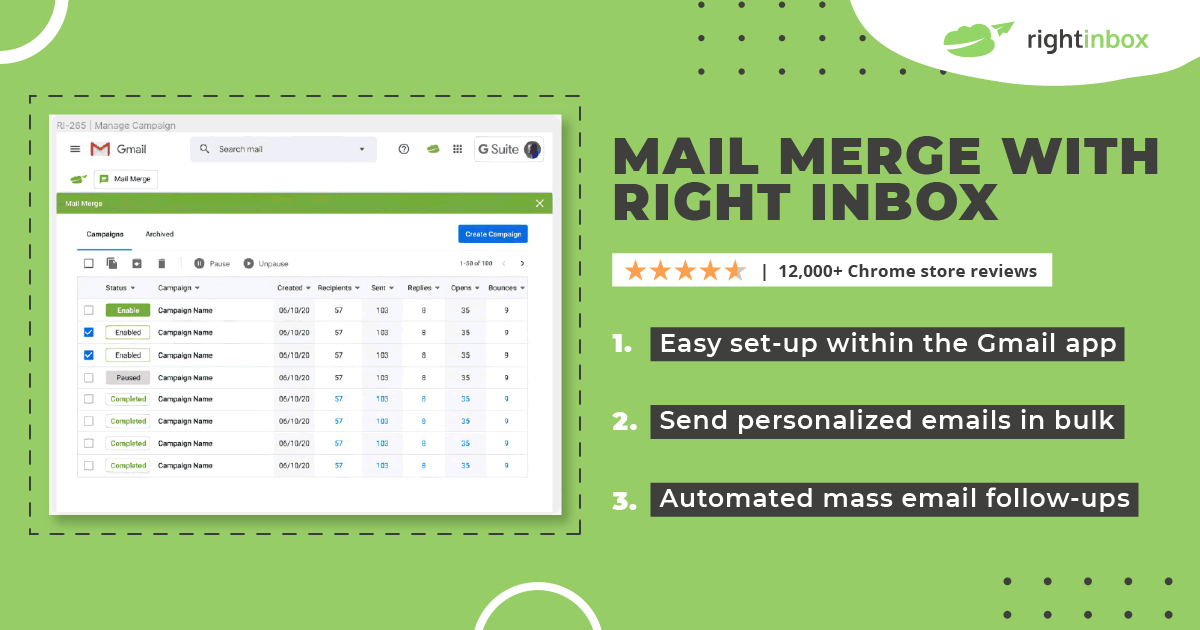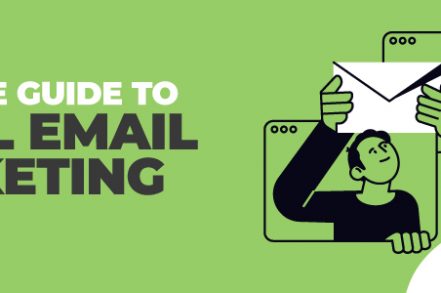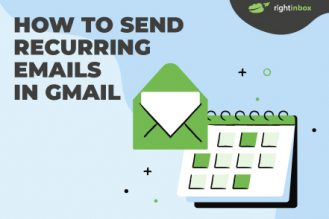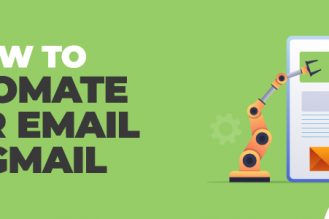Over the past decade or so, social media has become something of a craze in the marketing world and has overshadowed other more traditional channels, like email.
If you’re hesitant to learn a whole new marketing tool, like Mailchimp or Mailshake, you’ll be happy to learn that you can start your email marketing journey with simple Gmail extensions.
In this guide, we’ll show you how to do just that. We’ll walk you through setting up your marketing environment and give you some tips on how to make your efforts succeed.
1. Decide on a Gmail Marketing Tool
The first thing you’ll need to do is decide which tool you’re going to use. Although you’ll still be using the Gmail interface, you need to use an extension if you want to send mass emails. Sending emails to large lists without a Gmail marketing tool can quickly become overwhelming and hard to manage.
There are several options available, such as Right Inbox, Yet Another Mail Merge, and Gumbamail. We recommend using Right Inbox along with Yet Another Mail Merge because of its extensive feature set that’s designed for both mass email marketing as well as more precise and individualized cold outreach campaigns. Right Inbox recently released a mail merge tool that has everything you need for email marketing within Gmail. Set up email newsletter within Gmail, automate email marketing campaigns or send followup marketing emails to previous customers.

2. Manage Your List in Google Sheets
One drawback to using Gmail marketing extensions instead of platforms like Mailshake or Klaviyo is that you can only send 500 emails per day. If you have a list that’s larger than 500 people, you’ll likely need another solution.
However, assuming your list is under 500 emails, you can use Google Sheets to manage it. To do so, you’ll just need to download and install the Google Sheets add-on called Yet Another Mail Merge. Simply add it in to your Google Sheets list and click “Send XXX emails” when you’re ready.
Alternatively, you can manage your list in Google Sheets and then copy those emails into the BCC field when writing an email in Gmail.
3. Ensure You’re Following the Law
The line between marketing emails and spam is thinner than you may think. If you mistakenly cross over that line, you can end up not only alienating customers but also breaking the law.
Before you send your first email blast out, make sure you have thoroughly acquainted yourself with the relevant laws in your jurisdiction. Failing to follow the law can land you with hefty fines of up to $42,530 per email. That means if you send 100 spam emails, you could be facing penalties of over four million dollars.
In the US, you’ll need to comply with the CAN-SPAM Act. In Canada it’s CASL (Canadian Anti-Spam Legislation), in the EU it’s the E-Privacy Directive and GDPR (General Data Protection Legislation).
4. Personalize Your Emails
Personalizing your emails not only helps them get through spam filters, but it also increases the likelihood that the receivers will respond well to them. In fact, a study by Experian found that personalized emails increased transaction rates by 600%.
The two primary ways you can personalize your emails is through merge fields and list segmentation.
Merge fields are what you use to make your emails say “Hello Dave” instead of “Hello customer.”
List segmentation is a bit less direct. Which brings us to our next point…
5. Segment Your List
Segmenting your list is all about breaking it up into different chunks based on demographics, user behavior, or some other criteria. Doing this helps you send only the most relevant content to your receivers, which increases the likelihood they’ll act on it.
For example, let’s say you have a list of 500 people, 50% of whom are male and 50% of whom are female. You may want to split this list into two segments so that you can send different emails to each group. Then, perhaps you’d want to segment those lists even further by age.
You can also segment your lists by behavior. For example, you could split your list into segments based on what products they’ve added to their cart, or whether they’ve made a purchase already or not.
6. Split Test Your Emails
Email marketing is half art and half science. While you need to be creative to write great copy and design good looking emails, you also need to ensure that the numbers show that your efforts are working.
Split testing is a way to run experiments on your emails. The process is simple: send one email to half of your list and a variation on that email to the other half (or any other grouping that makes sense). Then, see which one performs better and model your subsequent emails off that one. Or, if it’s recurring email, drop the low performer in favor of the high performer.
You may want to do this by sending to a small portion of your list first and then sending out the winning email to your full list.
7. Measure Your Success
As you continue marketing your business through email, you’ll need to check whether your efforts are panning out or not. To do this, you can either manually collect data (through surveys, for example) or use analytics tools.
One of the most important ratios to look at when it comes to email marketing is the click-through rate (CTR). This is a measure of how many people clicked on a specific link in your email, such as a call to action (CTA), compared to the number of people that viewed it.
Key Takeaways
Gmail marketing extensions can provide a great way to get involved with email marketing without having to invest in a costly and time consuming email marketing platform.
While this method does have its restrictions, such as not being able to send more than 500 emails per day, it’s a good starting point that can work well for businesses with small lists.
If you want to get started with Gmail marketing, Right Inbox is a great way to jump in. Its useful email templates feature and its upcoming mail merge capabilities make it a perfect introduction to the space.
Track emails, email reminders & templates in Gmail for free
Upgrade Gmail with the features it’s missing
Add to GmailDavid Campbell
David Campbell is the editor of the Right Inbox blog. He is passionate about email productivity and getting more done in less time.




